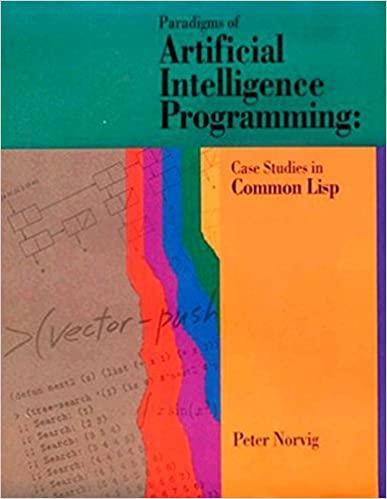The first strategy we will consider is called depth-first search. In depth-first search, the longest paths are
Question:
The first strategy we will consider is called depth-first search. In depth-first search, the longest paths are considered first. In other words, we generate the successors of a state, and then work on the first successor first. We only return to one of the subsequent successors if we arrive at a state that has no successors at all. This strategy can be implemented by simply appending the previous states to the end of the list of new successors on each iteration. The function depth - f i r s t - search takes a single starting state, a goal predicate, and a successor function. It packages the starting state into a list as expected by tree-search, and specifies append as the combining function:
(defun depth-first-search (start goal-p successors)
Step by Step Answer:

Paradigms Of Artificial Intelligence Programming Case Studies In Common Lisp
ISBN: 9781558601918
1st Edition
Authors: Peter Norvig






